#Rotary Screening Machine
Explore tagged Tumblr posts
Text
As an important auxiliary material in agricultural production, the quality and safety of organic fertilizer directly affect the growth of crops and the health of soil. In the production process of organic fertilizer, the effective control of microbial activity is the key link to ensure the quality of organic fertilizer. Here are a few key points for effective control of microbial activity:
1. Raw material pretreatment: The raw materials of organic fertilizer usually come from agricultural waste and livestock and poultry manure, which are rich in microorganisms. Turning through a Compost turning Machine (such as the Windrow Compost Turning Machine) can effectively control the activity of microorganisms, promote the growth of beneficial microorganisms, and inhibit the reproduction of harmful microorganisms.

2. Fermentation process management: In the organic fertilizer production line, fermentation is a key step, which directly affects the control of microbial activity. By adjusting the moisture, temperature and ventilation conditions in the fermentation process, the living environment of microorganisms can be optimized and the reproduction of beneficial microorganisms can be promoted. For example, maintaining the right humidity can promote microbial metabolism, while proper ventilation helps aerobic microorganisms grow.
3. Microbial inoculation: In the production process of organic fertilizer, beneficial microorganisms can be inoculated to improve the control of microbial activity. These microorganisms can be azotobacter, phosphorus solubilizer or other microorganisms that can improve soil structure and improve soil fertility. Mixing evenly through a Horizontal Ribbon Mixer ensures an even distribution of microorganisms throughout the organic fertilizer, thus enhancing its effectiveness.

4. Microbial control in the pelleting process: In the organic fertilizer pelleting process, the fertilizer pelleting Machine series (such as Flat-Die Pellet Machine) can form uniform particles, which contributes to the stable existence of microorganisms in the fertilizer. At the same time, the temperature and pressure during the granulation process also affect the activity of the microorganisms, and precise control is required to maintain the activity of the microorganisms.

5. Quality testing and monitoring: In the entire organic fertilizer production process, regular quality testing is essential. By detecting the type and number of microorganisms, the quality and safety of organic fertilizers can be assessed. In addition, the Rotary Screening Machine is used to screen the finished product, which can remove unqualified particles and ensure the uniformity of the final product and the stability of the microbial activity.

Through the above measures, we can effectively control the microbial activity in the production of organic fertilizer, produce high-quality organic fertilizer, and promote the sustainable development of agriculture.
#Windrow Compost Turning Machine#Horizontal Ribbon Mixer#Flat-Die Pellet Machine#Rotary Screening Machine
0 notes
Text
In modern agricultural production, organic fertilizers are favored for their environmental protection and soil improvement properties. However, the quality and safety of raw materials in organic fertilizer production lines are directly related to the effect of fertilizers and the safety of agricultural products. Here are some key steps to take to ensure the quality and safety of Organic Fertilizer Production Line materials:
Raw material selection and pretreatment: First of all, the raw materials of organic fertilizer need to be strictly selected and pretreatment. Livestock manure, crop straw and other raw materials should be crushed before fermentation to increase the surface area and promote the decomposition of microorganisms. For example, the use of Cage Crusher can effectively crush materials such as urea, thereby improving fermentation efficiency.

Fermentation process control: the fermentation link in the organic fertilizer production line is crucial. Turning raw materials through a Compost turning Machine, such as the Windrow Compost Turning Machine, ensures that the fermentation process is uniform and adequate, helping to kill pathogens and weed seeds while releasing heat and promoting the breakdown of organic matter.

Mixing uniformity: The use of Double Shafts Paddles Mixer can ensure that the NPK Fertilizer and other additives in the organic fertilizer are evenly mixed to avoid the difference in fertilizer effect caused by uneven mixing.

Granulation quality: The granulation link in the organic fertilizer production line is equally important. Through the fertilizer Granulator series, such as the Flat-Die Pellet Machine or Rotary Drum Granulator, uniform fertilizer particles can be formed to improve the efficiency and effectiveness of fertilizer application.
Screening and dust removal: After granulation, use fertilizer screening Machine (such as Rotary Screening Machine) to screen fertilizer particles, remove unqualified particles, and ensure the uniformity of the finished product. At the same time, it is equipped with efficient dust removal equipment to reduce dust emissions in the production process and protect the environment and workers' health.

Drying and cooling: organic fertilizer particles need to be dried and cooled before packaging. The use of Rotary Dryer Machine and Rotary Cooler Machine can effectively remove the moisture in the particles, extend the shelf life of the fertilizer, and reduce the risk of mildew caused by excessive moisture.
Quality testing: In the whole process of Organic Fertilizer Production Line, the quality of raw materials and finished products are regularly tested to ensure that they meet national and industry standards. This includes the detection of organic matter content, nutrient composition, heavy metal content and other indicators to ensure the safety and effectiveness of organic fertilizers.

Through the above measures, we can effectively ensure the quality and safety of raw materials in the organic fertilizer production line, produce efficient and environmentally friendly organic fertilizer products, and promote the sustainable development of agriculture.
#Organic Fertilizer Production Line#Cage Crusher#Windrow Compost Turning Machine#Double Shafts Paddles Mixer#Rotary Screening Machine
0 notes
Text
Fertilizer granulator is the key equipment in the fertilizer production line, its main role is to process powdered or liquid fertilizer raw materials into pellets by physical methods, so as to facilitate application and improve the utilization rate of fertilizer. The following is the working principle and process of fertilizer granulator:
1. Raw material mixing: First of all, various fertilizer raw materials such as nitrogen fertilizer (Urea), Ammonium Dihydrogen Phosphate, Potassium Chloride, etc., need to be fully mixed before entering the granulator to ensure the nutritional balance of the final product. This step is usually done using a Horizontal Ribbon Mixer or a Double Shafts Paddles Mixer to achieve an even mix of ingredients.

2. Compression molding: The evenly mixed Fertilizer raw materials are fed into the fertilizer granulator, such as the Fertilizer Granules Compaction Machine or Flat-Die Pellet Machine. Inside the granulator, the raw material is formed into particles by extrusion or pressing. In this process, an appropriate amount of water or binder may be added to improve the molding effect of the particles.

3. Particle molding: In the process of extrusion or pressing, fertilizer raw materials are compressed into particles. These particles are squeezed inside the granulator to form particles of a certain size and shape. The shape and size of the particles can be controlled by adjusting the parameters of the granulator to meet different application requirements.
4. Screening and grading: The formed particles are then screened through the fertilizer screening Machine (such as Rotary Screening Machine) to ensure that the size of the particles is uniform and meets the product quality requirements. Pellets that do not meet the specifications may be returned to the granulator for reprocessing.
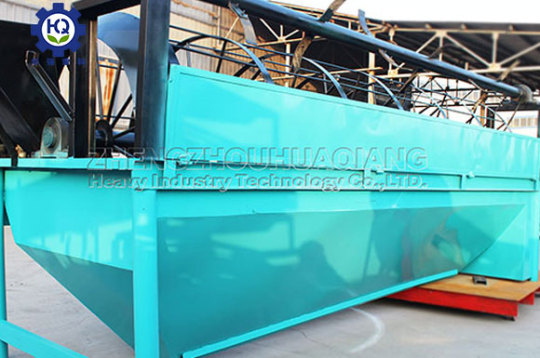
5. Drying and cooling: The newly formed particles usually contain high moisture, and need to be dried by Rotary Dryer Machine to reduce the moisture content and improve the stability and storage of the particles. The dried particles are then cooled by Rotary Cooler Machine to ensure that the temperature of the particles is appropriate for subsequent packaging and storage.
6. Packaging and storage: The cooled granular fertilizer is fed quantitatively through Uniform Feeder, and then packaged. Packaged fertilizer pellets can then be stored or transported for use in agricultural production.
Through the above process, the fertilizer granulator converts various fertilizer raw materials into granular products that are easy to apply and manage, improving the nutritional value and use efficiency of the fertilizer. This equipment plays a vital role in the Organic Fertilizer Production Line and the NPK Fertilizer Production Line.
#Horizontal Ribbon Mixer#Fertilizer Granules Compaction Machine#Rotary Screening Machine#Organic Fertilizer Production Line#NPK Fertilizer Production Line
0 notes
Text
NPK Fertilizer is an indispensable fertilizer in modern agricultural production. It contains three elements, nitrogen (N), phosphorus (P) and potassium (K), which are key nutrients for crop growth. To improve the nutritional value of NPK Fertilizer Production Line, it is necessary to optimize the selection of raw materials, production process control and technological innovation.
First of all, the choice of raw materials is the basis for improving the nutritional value of fertilizers. High-quality nitrogen fertilizer such as Urea, Ammonium Sulfate, Ammonium Chloride, Phosphate fertilizers such as Ammonium Dihydrogen Phosphate, Ammonium Phosphate Dibasic, Ground Phosphate Rock, Potassium Chloride, Potassium Sulphate and so on are the key raw materials for the production of high nutritional value compound fertilizer.
Secondly, the control of the production process is equally important. At the NPK Fertilizer Production Line, the balance of nutrients in the fertilizer can be ensured through the precise ratio of raw materials and mixing uniformity. The use of a Horizontal Ribbon Mixer or a Double Shafts Paddles Mixer for raw material mixing increases the efficiency and uniformity of mixing, thereby increasing the nutritional value of the fertilizer.
Technological innovation is also an important means to enhance the nutritional value of fertilizers. For example, the use of advanced fertilizer Granulator series such as Rotary Drum Granulator and Flat-Die Pellet Machine can improve the shape and size of fertilizer pellets, improve the solubility of fertilizer and increase the absorption rate of crops.
In addition, the screening process in the fertilizer production line cannot be ignored. Using a Rotary Screening Machine to screen fertilizer particles can remove unqualified particles and ensure the uniformity and quality of the fertilizer.
Finally, the drying and cooling process of the fertilizer also affects its nutritional value. The use of Rotary Dryer Machine and Rotary Cooler Machine can effectively control the moisture content of fertilizer, prevent nutrient loss or caking caused by excessive moisture, and ensure the quality and nutritional value of fertilizer.
In summary, through careful selection of raw materials, optimization of the Production process, the use of advanced granulation and screening technology, as well as control of drying and cooling links, the nutritional value of NPK Fertilizer Production Line can be effectively improved, so as to better meet the needs of modern agricultural production.
0 notes
Text
In the tropical orchards of Southeast Asia, durian has won the reputation of "King of fruits" for its unique aroma and rich nutrition. However, the high quality of durian is not only dependent on the unique natural conditions, but also on modern agricultural technology, especially the application of organic fertilizer granulation technology.
Organic Fertilizer Production Line plays a vital role in durian cultivation. The organic fertilizer produced through this production line can provide the durian tree with comprehensive nutrition, including essential mineral elements such as nitrogen, phosphorus and potassium, as well as organic matter, thereby promoting the healthy growth of the durian tree and the formation of high-quality fruit.
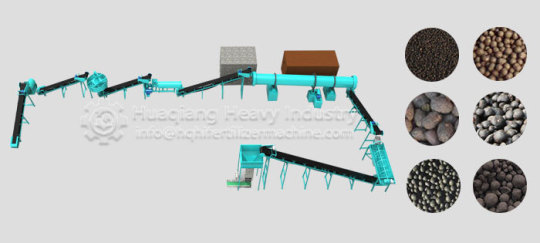
In organic Fertilizer granulation technology, Fertilizer Granules Compaction Machine plays an irreplaceable role. It extrudes organic fertilizers into pellets by physical methods, which not only facilitates the storage and transportation of fertilizers, but also improves the utilization rate and application effect of fertilizers. The organic fertilizer after extruded granulation has uniform particles and compact structure, which is more conducive to the absorption of the roots of durian tree.

In addition, the Horizontal Ribbon Mixer plays a key role in the production of organic fertilizers. It ensures the quality and effect of organic fertilizer by evenly mixing various raw materials. The design of this mixer helps to evenly mix the raw materials, avoiding the problem of local too wet or too dry, thus ensuring the stability and consistency of the organic fertilizer.

Finally, organic fertilizers usually need to be screened by a Rotary Screening Machine before application to ensure that the fertilizer particles are uniform in size and suitable for the growth needs of the durian tree. The use of screening machine improves the application quality of fertilizer and avoids the problem that the fertilizer effect is affected by too large or too small particles.

Through the application of these advanced organic fertilizer granulation technologies and equipment, the yield and quality of durian have been significantly improved. Organic fertilizers not only improve the fertility of the soil, but also help improve the taste and nutritional value of the durian fruit, making it a shining pearl in Southeast Asia's green revolution. With the continuous development and improvement of organic fertilizer granulation technology, we have reason to believe that durian, the "king of fruits", will exude more charming charm in the future.
#Organic Fertilizer Production Line#Fertilizer Granules Compaction Machine#Horizontal Ribbon Mixer#Rotary Screening Machine
0 notes
Text

Black Smith is a major manufacturer of trommel screen machines, known for their precision engineering and durable design. Black Smith provides dependable equipment that is customized to meet a wide range of industrial demands globally. The company specializes in creative solutions for material separation and screening.For more info visit our website: https://www.black-smith.in/trommel-screen
#Trommel Screen Machine Manufacturers in Gujarat#trommel machine#trommel screen machine#rotary trommel screen machine
0 notes
Text
0 notes
Text
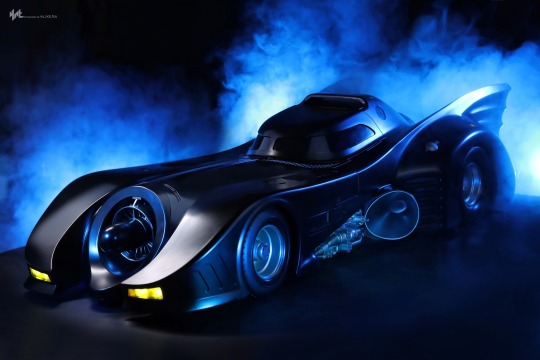


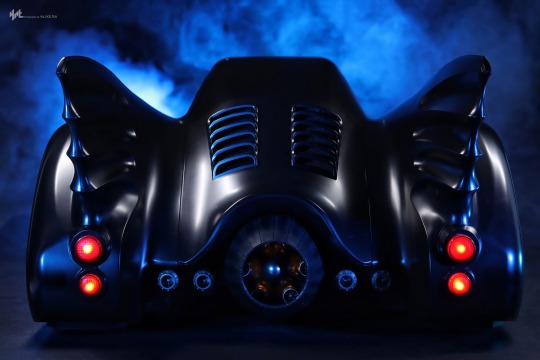
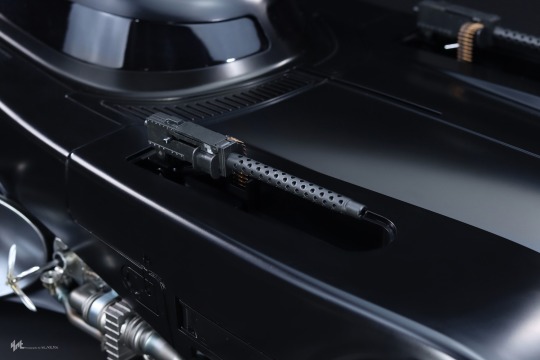
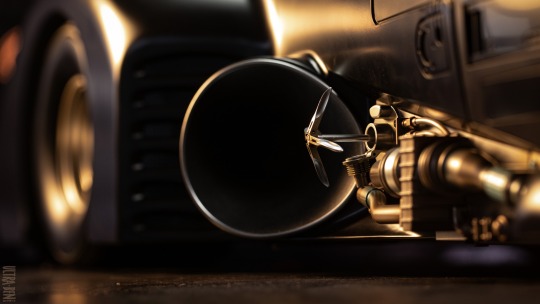
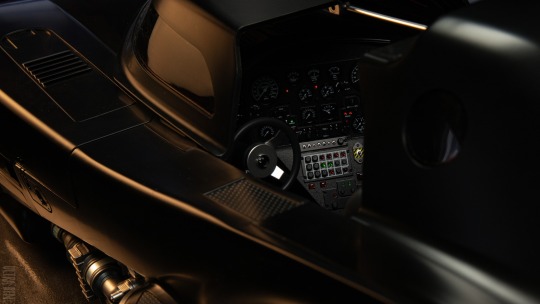
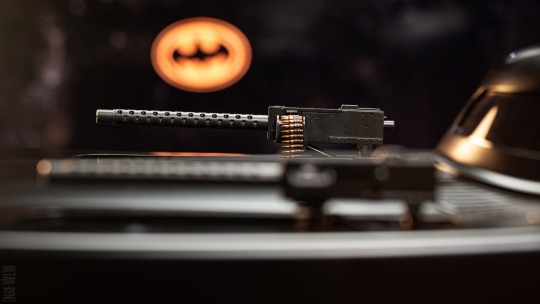
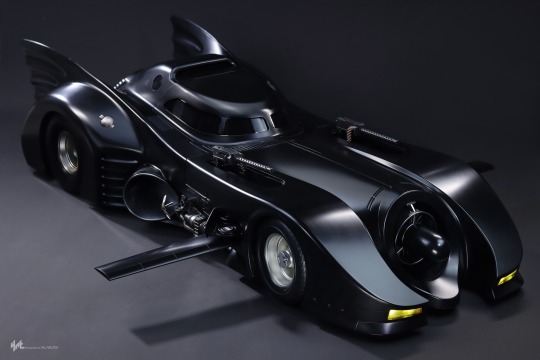

Batman (1989) - 1/6th scale Batmobile Collectible by Hot Toys
The Batmobile is Batman’s primary mode of transportation, also one of the most daunting components in his vast arsenal, keeping it stored in the Batcave when not in use. Now Hot Toys is thrilled to unveil the stunning blogger photos of this legendary ride as 1/6th scale Batmobile Collectible from the Batman (1989) collection.
The screen-accurate Batmobile measures approximately 100cm is fully designed to capture the mechanical design and painting bringing the remarkable Bat vehicle to reality. Features an incredible amount of details such as the slide-open canopy door; head and taillights, jet engine and dashboard panel with LED light up function; rotatable wheels; gadgets including the side-mounted batdisc launchers, machine guns, grappling hooks and shinbreakers, and a rotary base to recreate scene in the Batcave.
95 notes
·
View notes
Note
Taking inspo from your post
Could you write about the mind control machine swapping the minds of these Decepticons and Autobots:
Shockwave
Knockout
Bulkhead
Dreadwing
Ratchet
Ultra Magnus
Wheeljack
Soundwave
Optimus
Predaking
Use a random picker or a wheel to choose who gets mind swapped with who
If you wanna take it further, then add the reactions of the unaffected members on the situation and their behaviour around the affected mecha
good luck and have fun
Ratchet < - > Shockwave
Bulkhead < - > Knockout
Soundwave < - > Optimus
Dreadwing < - > Predaking
Wheeljack < - > Ultra Magnus
Dear Primus the wheel understands COMEDY
Ratchet
His depth perception is GONE and he is NOT happy. He's even LESS happy that he can't CONVEY how distinctly not happy he is nonverbally because he can't even make facial expressions anymore, so he's taken to LOUDLY bitching even more than usual. Admittedly, the extra weight to throw around and the precision-designed clawtips are very useful, and he likes being able to pop out of the ground bridge and lay down cover fire without getting mixed up in the action. It may be giving him ideas for backup weaponry in the future.
Shockwave
The lack of his typical ranged weaponry is frustrating. That anyone should be content with bladed melee weapons alone is simply illogical. He also finds himself incredibly annoyed with the subpar earth-based altmode and all the unnecessary human designed internal kibble it comes with. He does not naturally emote at all, and he will not be starting today, sudden addition of facial features be damned. Gets pretty creepy to see Ratchet's face completely devoid of his usual grumpiness in favor of a completely blank look.
Bulkhead
By the Allspark he feels so small... Speed has never been his strong suit, and grace ESPECIALLY hasn't. Sure the drill and the buzzsaw have been useful when he needs to deal damage, but they're just not the same as good old fashioned Blunt Force Trauma™️. He gets frustrated pretty quickly. However, he does take a certain malicious, schadenfreude-filled delight in messing up the good doctor's finish. He might just take Miko off-roading before they trade back 😈
Knockout
DONT LOOK AT HIM, HES UGLY!! Knockout is going to spend this ordeal researching a cure while locked in a closet... Whatever closet is big enough to fit him anyway. All his usual hideaway spots are way too small for such a big lug like Bulkhead. Which means he's stuck out in the open... Looking like a clumsy, dull, green oaf... UGHH!!!! New plan, time to lock himself in the medbay and have breakdown work his magic with a rotary buffer. New paint job, new slimming decals, he's going the whole 9 yards to make himself borderline presentable. Whether Bulkhead wants it or not.
Soundwave
Soundwave is taking this very special opportunity to do a little trolling. Under normal circumstances, he's sworn never to let his voice be heard again. However... It's not really his voice, now is it? Besides, he doesn't have any of his remix equipment OR his visor screen. His normal means of communication are out. Though he does have Laserbeak to record him while he uses optimus's face and voice to say all kinds of horrible, blackmail-worthy slag that could completely ruin his public image whenever Cybertron gets restored. He'll definitely take requests too :)
Optimus
Optimus is a mech who typically garners a lot of respect, by virtue of his position, his demeanor, and his sheer size. What he is not used to eliciting, however, is fear. And it hurts just a little seeing his trusted allies shrink back when they see him. He has no face to give comforting looks. His voice is not his, especially not under so many layers of off-putting static. Even his big, steady servos, so used to pulling people up when they fall, are good for little more than striking. And that's without mentioning the monstrous tentacles he finds himself relying on. He feels terrifying, and he doesn't like it one bit.
Dreadwing
Dreadwing does not like the Predacons. He doesn't like the Predacons one bit. Call him stuffy with his moral code, but he's firmly of the camp that if something is dead it should STAY dead. The odd little experiments Shockwave concocted are no exceptions. They shouldn't be alive, plain and simple. And the fact that currently he IS one of the resurrected beasts and the brain of this disgusting undead thing is running around in HIS body is, quite frankly, unacceptable. He's going to be looming over the resident scientists with his new terrifying form until they find a way to fix this grievous error and return things to some semblance of normalcy.
Predaking
He feels... Terribly small. Especially in his altmode. Flying without needing to move your wings at all is quite a strange experience. As is having no face or limbs outside robot mode. He's just so compact and it's all very uncomfortable. He will admit, though, it's nice being treated less like an animal. He's yearned to be seen as an equal, true and proper, and this is about as close as he's gotten.
Wheeljack
Oh man, he switched bodies with the straight laced hard aft? Man, if Primus really has a hand in how things play out, he's one funny bitch. He's taking full comedic advantage of this situation, much to Magnus's chagrin. He's saying every swear he knows and breaking every petty rule in the autobot code that he knows isn't really enforceable. He's going on insane monologues about how rules keep us from descending into chaos in a horrible impression of Magnus that overshoots and ends up sounding closer to Sam the eagle from the muppets than anything. The kids are laughing their asses off. Bots who have worked with magnus are doing everything in their power not to laugh, with mixed success rates.
Ultra Magnus
Ulta Magnus does not care too much about being shorter or currently looking like a delinquent with no regard for anything other than his own personal amusement and some abstract concept of "coolness." ...Okay, he cares a lot and its very frustrating that people take a second to take him seriously again, but he cares much MORE about the delinquent currently inhabiting HIS frame and making a mockery of everything he believes in!!! It's unacceptable behavior and his body should be treated with the respect it deserves, not puppeted around for unfunny satire!!! He refuses to stoop to his level and mock back, so he'll simply stare him down until he gets the damn message.
#maccadam#transformers#tfp#ratchet#shockwave#bulkhead#knockout#optimus prime#soundwave#dreadwing#predaking#ultra magnus#wheeljack#im sorry this took ages i kept getting sick and not being able to write anything 🥲
98 notes
·
View notes
Text
The Evolution of DJ Controllers: From Analog Beginnings to Intelligent Performance Systems
The DJ controller has undergone a remarkable transformation—what began as a basic interface for beat matching has now evolved into a powerful centerpiece of live performance technology. Over the years, the convergence of hardware precision, software intelligence, and real-time connectivity has redefined how DJs mix, manipulate, and present music to audiences.
For professional audio engineers and system designers, understanding this technological evolution is more than a history lesson—it's essential knowledge that informs how modern DJ systems are integrated into complex live environments. From early MIDI-based setups to today's AI-driven, all-in-one ecosystems, this blog explores the innovations that have shaped DJ controllers into the versatile tools they are today.

The Analog Foundation: Where It All Began
The roots of DJing lie in vinyl turntables and analog mixers. These setups emphasized feel, timing, and technique. There were no screens, no sync buttons—just rotary EQs, crossfaders, and the unmistakable tactile response of a needle on wax.
For audio engineers, these analog rigs meant clean signal paths and minimal processing latency. However, flexibility was limited, and transporting crates of vinyl to every gig was logistically demanding.
The Rise of MIDI and Digital Integration
The early 2000s brought the integration of MIDI controllers into DJ performance, marking a shift toward digital workflows. Devices like the Vestax VCI-100 and Hercules DJ Console enabled control over software like Traktor, Serato, and VirtualDJ. This introduced features such as beat syncing, cue points, and FX without losing physical interaction.
From an engineering perspective, this era introduced complexities such as USB data latency, audio driver configurations, and software-to-hardware mapping. However, it also opened the door to more compact, modular systems with immense creative potential.
Controllerism and Creative Freedom
Between 2010 and 2015, the concept of controllerism took hold. DJs began customizing their setups with multiple MIDI controllers, pad grids, FX units, and audio interfaces to create dynamic, live remix environments. Brands like Native Instruments, Akai, and Novation responded with feature-rich units that merged performance hardware with production workflows.
Technical advancements during this period included:
High-resolution jog wheels and pitch faders
Multi-deck software integration
RGB velocity-sensitive pads
Onboard audio interfaces with 24-bit output
HID protocol for tighter software-hardware response
These tools enabled a new breed of DJs to blur the lines between DJing, live production, and performance art—all requiring more advanced routing, monitoring, and latency optimization from audio engineers.
All-in-One Systems: Power Without the Laptop
As processors became more compact and efficient, DJ controllers began to include embedded CPUs, allowing them to function independently from computers. Products like the Pioneer XDJ-RX, Denon Prime 4, and RANE ONE revolutionized the scene by delivering laptop-free performance with powerful internal architecture.
Key engineering features included:
Multi-core processing with low-latency audio paths
High-definition touch displays with waveform visualization
Dual USB and SD card support for redundancy
Built-in Wi-Fi and Ethernet for music streaming and cloud sync
Zone routing and balanced outputs for advanced venue integration
For engineers managing live venues or touring rigs, these systems offered fewer points of failure, reduced setup times, and greater reliability under high-demand conditions.

Embedded AI and Real-Time Stem Control
One of the most significant breakthroughs in recent years has been the integration of AI-driven tools. Systems now offer real-time stem separation, powered by machine learning models that can isolate vocals, drums, bass, or instruments on the fly. Solutions like Serato Stems and Engine DJ OS have embedded this functionality directly into hardware workflows.
This allows DJs to perform spontaneous remixes and mashups without needing pre-processed tracks. From a technical standpoint, it demands powerful onboard DSP or GPU acceleration and raises the bar for system bandwidth and real-time processing.
For engineers, this means preparing systems that can handle complex source isolation and downstream processing without signal degradation or sync loss.
Cloud Connectivity & Software Ecosystem Maturity
Today’s DJ controllers are not just performance tools—they are part of a broader ecosystem that includes cloud storage, mobile app control, and wireless synchronization. Platforms like rekordbox Cloud, Dropbox Sync, and Engine Cloud allow DJs to manage libraries remotely and update sets across devices instantly.
This shift benefits engineers and production teams in several ways:
Faster changeovers between performers using synced metadata
Simplified backline configurations with minimal drive swapping
Streamlined updates, firmware management, and analytics
Improved troubleshooting through centralized data logging
The era of USB sticks and manual track loading is giving way to seamless, cloud-based workflows that reduce risk and increase efficiency in high-pressure environments.
Hybrid & Modular Workflows: The Return of Customization
While all-in-one units dominate, many professional DJs are returning to hybrid setups—custom configurations that blend traditional turntables, modular FX units, MIDI controllers, and DAW integration. This modularity supports a more performance-oriented approach, especially in experimental and genre-pushing environments.
These setups often require:
MIDI-to-CV converters for synth and modular gear integration
Advanced routing and clock sync using tools like Ableton Link
OSC (Open Sound Control) communication for custom mapping
Expanded monitoring and cueing flexibility
This renewed complexity places greater demands on engineers, who must design systems that are flexible, fail-safe, and capable of supporting unconventional performance styles.
Looking Ahead: AI Mixing, Haptics & Gesture Control
As we look to the future, the next phase of DJ controllers is already taking shape. Innovations on the horizon include:
AI-assisted mixing that adapts in real time to crowd energy
Haptic feedback jog wheels that provide dynamic tactile response
Gesture-based FX triggering via infrared or wearable sensors
Augmented reality interfaces for 3D waveform manipulation
Deeper integration with lighting and visual systems through DMX and timecode sync
For engineers, this means staying ahead of emerging protocols and preparing venues for more immersive, synchronized, and responsive performances.
Final Thoughts
The modern DJ controller is no longer just a mixing tool—it's a self-contained creative engine, central to the live music experience. Understanding its capabilities and the technology driving it is critical for audio engineers who are expected to deliver seamless, high-impact performances in every environment.
Whether you’re building a club system, managing a tour rig, or outfitting a studio, choosing the right gear is key. Sourcing equipment from a trusted professional audio retailer—online or in-store—ensures not only access to cutting-edge products but also expert guidance, technical support, and long-term reliability.
As DJ technology continues to evolve, so too must the systems that support it. The future is fast, intelligent, and immersive—and it’s powered by the gear we choose today.
2 notes
·
View notes
Text
STAFFORD - BUT IT WAS ALL A DREAM?
Utterly surrounded by assault mechs. A normal Tuesday. Backpedaling up a hill while under fire from 5 different angles. Emile in the Certain Death, a Highlander with a second gauss rifle and at the moment an arm actuator fried, but doing surprisingly well. Locke in her custom fitted Striker, rolling backwards and swarming the enemy with missiles, ripping through the critical components of an Atlas who would otherwise be clawing his way up the hill, if his internals did not resemble melted slag. And of course himself, in his custom Longbow. And yet, they were still on the back foot. Catapults flooded the hills, and they were losing ground to Banshees, Battlemasters, Nightstars, a King Crab he saw on another hill. Jenners and Commandos flooded the hills, frantically scrambling up the hills to tear away at the Battlemechs and the lone tank.
Too many targets to fire on. Splashing MRMs between the light mechs was easier said than done, but it was getting done. He knew the Tri-charge MRM ammo was far more than capable of tearing through them. Gyros were torn to shreds as BattleMechs fell, unable to fight without the stabilization. They still clawed away at them, firing a constant barrage of SRMs.
And all at once, it all came crashing down. A Gauss round from the Nightstar on another hill ripped through the cockpit armor on the Certain Death. The mech stumbled backwards, and it was only then Stafford saw the geyser of sparks as the cockpit components ignited like a thermite fire. A Javelin interrupted him mid grieving, firing a barrage of SRMs into the legs. Quickly dispatching him, he then saw a Phoenix Hawk jumping towards his superior's tank. She fired away, but to no avail, the SRMs were still reloading. A falling leg from the 55-ton mech firmly thrust through the front of the tank ensured Locke was dead where she stood.
He was next, a Jenner cooking off some of the incredibly explosive ammunition in the legs. Legs snapping like twigs, he fell over, defeated. As he clawed his way out of the cockpit, he saw his love fall last. Cataphract, clicking dry on Rotary Autocannon munitions, firing away on the lasers before a hatchet cleaved his frame in two. He crawled over to his dearest project's cockpit in the frenzy, as the hostile mechs moved on towards the base. He detached his damaged rebreather device.
The glitching mech stuttered and paused when he saw his Machinist's weak, bloody body before him. And finally the ancient machine spoke through a broken screen in the small cockpit.
///UNUSUAL FORCE SIZE. NO PROJECTED VICTORY.
///MAC1HNIST. EXPLAIN CU?REN%$ LOCATION. WHY COME H3RE?
"I came back here to see you. I don't want you to die alone."
///DEATH. UNALONE. FIGHTING $%#@ INSUFF$#CIENT?
"I wanted to be with you. I'm too... damaged. Lungs... my breather is broken."
///IF LEAVE, CHANE O? S%RV1CAL? EMERGENCY EXCAPE?
"No. It hurts. But it hurts less than having you here."
///...illOGICAL. MACHINIST. UNIT APPRECIATES... DEDICATED SERVICE t0 SEL%.
"I appreciate... you too. I love you, my dearest Cataphract. "
///LOVE. APSTRACT CONCEPT. DECOMPILE.
///...UNIT... MACHINIST. UNDERSTAND.
The computer shuts down, no longer able to draw any power from the fusion reactor.
And then he woke up in bed.
He pored over the dream again. He could hardly drag himself from his mattress, so this is what he resigned himself to. He checked his rebreather again. It was fine. Same model, same wear and tear. The amount of Battlemechs though, none of those mechs correlated with the same force. Wolfhounds, those could be found throughout the Commonwealth, so could the Javelin. The Jenner was from the Draconis Combine though. Phoenix Hawks were everywhere. He didn't know any one military that fielded the Nightstar, though the Atlas was a Steiner staple. All in all, the force composition barely made sense, and neither did the amount of mechs. Slowly, he dragged himself towards the edges of the bed, before allowing his legs to fall. His spine began to hurt, like it always did when he got up.
Getting around for the day, that dream bothered him, constantly thinking. The machinist knew the constant back and forth in his mind would give him a headache, so he took some pain medications to hopefully soothe the oncoming storm. He filed his usual morning paperwork, sending both his superiors requests for weaponry through to their required sources and the usual "cheap clan-tech" scam offers into the "shred and flag" box with equal efficiency.
And then he did something strange, at least for him. Instead of heading to the mech bay, per usual, he headed to the simulator room. Recently expanded to fit more pilots at once now that there was room in the budget for the upgrade, he hopped into the first pod available. He swiftly booted up the computer, set it to solo mode, and shut the pod door behind him and locked it. After reconfiguring the control scheme and uploading his mechs design into the machine, remembering to enable the additional equipment recently modded into the pods. He began placing the enemies as he saw them in the dream. Once he had finished adding the final mech, he entered into the simulation.
He did not leave that simulator for several hours. By the third attempt, he was the first to fall. On the fifth, Cataphract had fallen first at least twice. None of the attempts resulted in anything but failure. There was simply too much of a numbers advantage, but that did not stop him from trying again and again. By the time he had called it quits, he was in enough distress to almost start crying. It had to be possible, he thought to himself, it had to be.
He tore himself out of the metal box. Several hours had passed, looking at the clock. Around four hours, at the very least. And yet, he felt more hollow than when he entered. On the way back to his room, he passed by his coworkers. He was able to keep on his usual facade of cold, calculating efficiency, this time with a facade of tiredness to mask the fact that he was about to break down. Quickly reviewing an extensive refit of a Hollander, reported by the customer to be a family heirloom in need of a restoration with Clantech. Quickly signing off on the work that needed to be done with some armament recommendations, he let the engineers get to it. He quickly stole and signed into a tablet that was there as well. No new messages from Chatterbox. He sighed, signed out and left.
On his way back to his room, he encountered someone familiar, a Supernova pilot he knew well. An Elemental, Megaera Fetladral, taken as a bondsman and put under extensive training with a salvaged Clan BattleMech. And as well, his ex girlfriend. He had no bad memories of her, as she did not with him, but they had mutually agreed that their arrangement was not working out, and so, split up after two months. As they both still harbored emotions for each other, he stared longingly as she finished up putting together some paperwork for her control preferences relating to a modification Locke wanted to test.
Sensing she was being watched, Megaera turned to look at the senior engineer. He waits beside a door, and apprehensively waves her good night before quickly stepping through the door before his eyes can meet hers. Something is wrong. Usually he would approach with the confidence of a man who knew he was going to die and chuckle something about how she needs practice in how to maintain Clan double heatsinks, or perhaps how the prism on her Supernova's Large Pulse Lasers needed tuning. Here, in this moment, nothing. She saw his hand, white knuckling the doorframe. She saw the lack of eye contact, the readjustment of his rebreather to hide his face as he turns around towards the door. Something was very wrong.
She followed him through the door leading out of the mechbay and trailed him to his room. She could navigate this facility in her sleep, and would, had there not been bulkhead doors in the way of that. She waited for him to duck into his room and close the door, adjusting her suit and taking off her jacket. She had completed her duties for today, and now there was an important matter to attend to. And at last, with a moment's hesitation, she opened the door.
Lying down on his bed, the machinist did not have the energy or emotional capacity to process that there even could be someone by the door. Megaera calmly wandered over to the man, seeing the new decorations, as well as an aquarium tank containing a crab as well as some shrimp which she was sure he did not possess when they were a couple. The crab woke up and turned to look at the Mechwarrior and with a look that she could only interpret as mild irritation from being awoken, not unlike some members of her sibko, the crab then turned over to go pry some plant matter from a sea weed placed into the tank.
She turned to the unresponsive man on the bed, and placed a hand on his shoulder, lying down next to him and dragging a blanket over the two of them. Dragging her hand forward and down across his chest, she finally spoke to him.
"You are upset, my dearest. What troubles you?"
"Nothing I can do... i hate... i hate not being able to do anything."
She paused for a moment. Something must have come up with the mech he was working on, but he signed off on repairs to start on the Hollander that rolled into there, since she saw the engineers start crawling all over the old machine. He was sweating though, so perhaps he could have been in the simulator bay beforehand? But why would he be in there, and what could have distressed him that much?
"There are times where you cannot win with what you have. You must either take away the enemies advantage, or sometimes, you must admit defeat. There are enemies that will have advantages you would not consider, could not know. That was how you took me as bondsman, quiaff? I did not take landmines and mechs that could match ranges with my own into account."
The Elemental began pressing a hand into his back, working out the kinks in his back. Her other hand coiled around him, holding him close. He was a bit closer to crying, but he could hardly complain with the sharp nails scratching away at his back.
"I remember. You were yelling about honor over comms."
"I was, aff. I am over the landmines. It is a valid tactic, and it put me on the back foot. I believe the only thing i am not over was the abomination of a firearm your superior pointed at me, however that is a personal complaint." she laughed.
He let out a small laugh that fades into a whimper.
"It is alright. Let it out." she whispered into his ear, rolling the mechanic over to face her. She gently grabbed the back of his head, gently guiding him towards her soft chest to lay his head against. As the emotions began to flow again, she whispered "We all have our own duties. And you have done more than enough today. You must rest."
The world outside froze for this moment, even as work continued some distance away. The mechs could wait, even if this moment stretched on forever.
4 notes
·
View notes
Text
In modern agricultural production, the disposal of chicken manure has always been a difficult problem. However, with the continuous development of organic fertilizer granulation technology, this problem has been effectively solved. By converting chicken manure into organic fertilizer, it not only solves the problem of environmental pollution, but also brings additional economic benefits to chicken farms.

First of all, the establishment of Organic Fertilizer Production Line is the key to achieve this transformation. Production lines usually include raw material preparation, fermentation, crushing, mixing, granulation, drying, screening and packaging. At the raw material preparation stage, fresh chicken manure is dehydrated and fermented to reduce odors and improve the stability of organic matter. During the fermentation process, the Windrow Compost Turning Machine can be used to increase oxygen and accelerate the decomposition of organic matter.
Next comes the crushing process, where Cage Crusher plays an important role in crushing the fermented material to a size suitable for granulation. The pulverized material passes to the Horizontal Ribbon Mixer, where it is mixed with other nutrients such as NPK fertilizers produced on the NPK Fertilizer Production Line to prepare for granulation.
Granulation is a crucial step in the production of organic fertilizer, where the Flat-Die Pellet Machine forms the mixture into pellets that have good physical properties and are easy to apply and store. The produced particles are then dried in a Rotary Dryer Machine to reduce the moisture content and improve the preservation of the fertilizer.
The dried organic fertilizer particles are screened by Rotary Screening Machine to ensure that the particle size is consistent and in line with market standards. Finally, Uniform Feeder will uniformly feed the sieved particles into the packaging system, complete the packaging, ready for sale.
Through this series of processing processes, the manure from the chicken farm is no longer waste, but becomes an efficient organic fertilizer. This fertilizer can not only improve soil structure and increase crop yields, but also reduce the use of chemical fertilizers, thus reducing the environmental impact.
In addition, the organic fertilizer granulation recycling mode also helps to improve the economic benefits of chicken farms. By selling organic fertilizer, chicken farms can obtain an additional source of income. At the same time, because the use of organic fertilizers reduces the dependence on chemical fertilizers, it also reduces the cost of agricultural production.
In short, the application of organic fertilizer granulation technology not only solves the problem of manure treatment in chicken farms, but also realizes the recycling of resources, which brings double benefits of environmental protection and economic benefits to chicken farms. With the continuous progress of technology and the increasingly mature market, organic fertilizer granulation will certainly play an increasingly important role in modern agricultural production.
#Organic Fertilizer Production Line#Windrow Compost Turning Machine#Cage Crusher#Horizontal Ribbon Mixer#NPK Fertilizer Production Line#Flat-Die Pellet Machine#Rotary Screening Machine#Uniform Feeder
0 notes
Text
In the process of organic fertilizer production, the quality of fermentation directly affects the effect and safety of the final product. Fungi and bacteria play an important role in the fermentation process, but excessive amounts can lead to fermentation failure or reduced product quality. The following is the method to determine whether the number of fungi and bacteria in the fermentation process of organic fertilizer is excessive.
1. Observe the fermentation state
In the Organic Fertilizer Production Line, the fermentation state is the most intuitive judgment basis. Normal fermentation of organic fertilizer should show uniform color and appropriate humidity. If there is an abnormal sour odor or foamy substance during fermentation, it may be due to abnormal fermentation caused by an excessive number of fungi or bacteria.

2. Check the pH value
pH value is an important index to measure the fermentation environment. Normal fermentation of organic fertilizer pH should be between 6-8. If the pH value is too high or too low, it may affect the normal growth of fungi and bacteria, resulting in a decline in fermentation quality. By regularly testing the pH value, the fermentation conditions can be adjusted in time to ensure that the number of microorganisms is within a reasonable range.
3. Microbial count
The microbial count is a direct way to determine whether the number of fungi and bacteria exceeds the standard. By collecting fermentation samples for microbial count, we can accurately understand the changes in the number of microorganisms during fermentation. Common methods include plate counting and microscopic observation. If the number of microorganisms exceeds the limit, measures can be taken to adjust, such as adding the right amount of Compost Turning Machine(such as Windrow Compost Turning Machine) to enhance ventilation and oxygen supply.

4. Detect organic content
In the process of organic fertilizer fermentation, the content of organic matter is also an important index. If the content of organic matter is too high or too low, it will affect the normal growth of fungi and bacteria. By detecting the organic content, it can be determined whether the fermentation is normal, and adjust the fermentation conditions in time, such as adding organic substances or strengthening ventilation.
5. Use professional equipment
Modern organic fertilizer production lines are often equipped with specialized equipment, such as Rotary Drum Granulator and Rotary Screening Machine, which can help monitor and control the number of microorganisms in the fermentation process and ensure fermentation quality.

6. Temperature monitoring
Temperature is another key factor in the fermentation process. The temperature of normal fermentation should be maintained between 50-60 ° C. If the temperature is too high or too low, it may mean an imbalance in the number of microbes. Through temperature monitoring, problems can be detected and adjusted in time to ensure the smooth fermentation process.
In summary, to determine whether the number of fungi and bacteria in the fermentation process of organic fertilizer exceeds the standard, it is necessary to comprehensively observe the fermentation state, detect pH value, microbial count, organic matter content and temperature and other indicators. Through scientific methods and advanced equipment, the number of microorganisms in the fermentation process can be effectively controlled to ensure the production of high-quality organic fertilizer and promote the sustainable development of agriculture.
#Organic Fertilizer Production Line#Windrow Compost Turning Machine#Rotary Drum Granulator#Rotary Screening Machine
0 notes
Text
In modern agricultural production, how to transform agricultural waste into valuable resources is an important topic to achieve sustainable development. The development of straw and grass bio-organic fertilizer is the vivid embodiment of this idea. Through scientific fermentation ratio, livestock manure and agricultural production waste are converted into organic fertilizer, which not only reduces environmental pollution, but also provides rich nutrition for the soil, promotes the growth of crops, and becomes a small helper for rural revitalization.
Fertilizer production lines play a crucial role in this process. NPK Fertilizer Production Line, for example, efficiently mixes these organic fertilizers with inorganic fertilizers to produce fertilizers that meet the needs of different crops. Such production lines usually include Fertilizer Granules Compaction machines and Flat-Die Pellet machines, which are capable of making fertilizer raw materials into pellets that are easy to apply.

In the production of the fertilizer, the use of Double Shafts Paddles Mixer ensures an even mix of raw materials, which is essential to improve the effectiveness of the fertilizer. The mixer achieves full mixing of materials through two relatively rotating axes and blades, thus ensuring the quality and effect of fertilizer.

Fertilizer Screening machines, such as Rotary screening machines, also play a key role in the production process, which can effectively separate different particle sizes of fertilizer particles to ensure that the final product meets the specifications. This step is very important to improve the uniformity and application effect of the fertilizer.

Finally, another important component of the Organic Fertilizer Production Line is the Cage Crusher. The crusher is able to crush large chunks of organic fertilizer into smaller pieces suitable for processing, facilitating subsequent granulation and mixing processes.
Through these advanced equipment and technology, the production of straw and grass bio-organic fertilizer not only improves the efficiency of agricultural production, but also helps to realize the resource utilization of agricultural waste, and promotes the green development of agricultural industry. This innovative method of turning "waste" into "fertilizer" provides new ideas and practical cases for sustainable agricultural development.
#NPK Fertilizer Production Line#Double Shafts Paddles Mixer#Rotary Screening Machine#Organic Fertilizer Production Line#Cage Crusher
0 notes
Text
Organic fertilizer is an important fertilizer source in modern agricultural production, and its production effect is directly related to soil fertility and crop yield. Selecting the right raw materials and optimizing the production process is the key to improving the quality of organic fertilizer.
First of all, the raw material selection of organic fertilizer should be based on the organic matter content, nutrient composition and microbial activity of the raw material. Common high-quality raw materials include animal manure, municipal sludge, domestic waste, sugar filter mud, wine lees, bean residue, straw, etc. After proper treatment and fermentation, these raw materials can be converted into nutrient-rich organic fertilizers.
In an organic Fertilizer Production Line, the Fertilizer Granulating Production Line is a key link in the formation of granular fertilizer. The granulation process not only improves the physical properties of fertilizer, but also helps to improve the application efficiency of fertilizer. For example, Fertilizer Granules Compaction Machine and Flat-Die Pellet Machine are commonly used granulation machines, which make raw materials into particles by extrusion, and these particles have good forming effect and high strength.
In order to further improve the quality of organic fertilizer, Windrow Compost Turning Machine plays an important role in the fermentation process. This equipment improves the fermentation efficiency by turning the compost, improving the ventilation conditions and promoting the rapid decomposition of organic materials.
In the production of organic fertilizers, the use of fertilizer shredders (such as Cage Crusher) is also essential. The pulverizer crushes the bulk organic material into the right size to facilitate subsequent mixing and granulation processes.
Finally, in order to ensure the uniformity of organic fertilizers and improve production efficiency, fertilizer mixers (such as the Horizontal Ribbon Mixer) and fertilizer Screening machines (such as the Rotary Screening Machine) are also indispensable equipment on the production line. Mixers are used for uniform mixing of raw materials, while sifters are used to separate fertilizer particles of different sizes to ensure consistency and quality of the final product.
Through scientific and reasonable raw material selection and production process optimization, it can not only improve the quality of organic fertilizer, but also contribute to the sustainable development of agriculture.
#Fertilizer Granules Compaction Machine#Flat-Die Pellet Machine#Cage Crusher#Horizontal Ribbon Mixer#Rotary Screening Machine
0 notes
Text
Organic fertilizer, as a green weapon to improve soil fertility and organic matter content, is gradually becoming the mainstream choice of modern agriculture. Scientific use of organic fertilizer equipment can effectively increase soil organic matter content, promote crop growth, and achieve sustainable agriculture.
The composting machine is the starting point of organic fertilizer production. By turning the pile regularly, the Windrow Compost Turning Machine accelerates the decomposition of organic matter and promotes the activity of beneficial microorganisms, thus generating fertilizer rich in organic matter. This process not only improves the quality of the fertilizer, but also provides the soil with a rich source of organic matter.

The Compost Crusher in the fertilizer crusher series is specially used to deal with semi-wet materials and crush large pieces of organic matter into fine particles. This step improves the uniformity of the organic fertilizer and makes it more easily absorbed by the soil, effectively increasing the organic matter content of the soil.

The Rotary Screening Machine in the fertilizer screening machine series plays the role of screening and grading in the production of organic fertilizers. By accurately screening the particle size of the organic fertilizer, the uniformity and applicability of the fertilizer are ensured, making it more suitable for the needs of the crop and the soil, and thus promoting the uniform distribution of organic matter in the soil.

Finally, fertilizer granule coating machine series Fertilizer Granules Coating Machine for organic fertilizer particles coated with a protective film, which not only extends the shelf life of fertilizer, but also controls the release rate of fertilizer, ensuring that organic matter is slowly and continuously released in the soil, providing lasting nutrient supply for crops, thus effectively improving the soil organic matter content.
Through the scientific application of the above organic fertilizer equipment, the soil organic matter content can be significantly increased, the soil structure can be improved, the crop yield can be increased, and the sustainable development of agriculture can be contributed.
1 note
·
View note